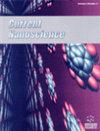Emerging Era in Colloidal Carriers Approach for Enhanced Transdermal Drug Delivery
IF 1.5
4区 材料科学
Q4 BIOTECHNOLOGY & APPLIED MICROBIOLOGY
引用次数: 0
Abstract
: Colloidal carriers are a promising type of carriers which play a crucial role in transdermal drug delivery and other topical applications. These carriers are usually present in the microscopic size, which offers different methods to enclose and deliver a diverse range of dynamic substances such as medicines, genes, and lipids. They offer distinct advantages by mimicking the natural structure of the skin's lipid bilayers using lipids and allowing the incorporation of different active compounds through the use of polymers. Recently, more advanced technology like artificial intelligence (AI) and machine learning (ML) has been adopted in the pharmaceutical field. The incorporation of artificial intelligence and machine learning techniques in colloidal carriers holds immense promise in revolutionizing the domain of drug delivery and nanomedicine. Machine learning algorithms can undergo training with the use of extensive datasets containing information on drug behavior within the human body, which can predict drug response within the body. Additionally, AI can be employed to anticipate various processes, thereby resulting in an enhanced delivery of medication using carriers. Many studies have shown the use of machine learning (ML) and artificial intelligence (AI) for optimizing the drug-carrying capacity via colloidal carriers. The present review concentrates on various categories of innovative colloidal vehicles in transdermal administration, alongside their penetration technique, benefit, and mechanism in the integumentary system. Outcomes from the different researches are critically assessed and showcase the potential of colloidal carriers to augment the penetration of drugs through the stratum corneum while minimizing adverse effects on the entire system with improved therapeutic effectiveness in various diseases.胶体载体强化透皮给药方法的新时代
:胶体载体是一种前景广阔的载体,在透皮给药和其他局部应用中发挥着至关重要的作用。这些载体通常具有微观尺寸,可提供不同的方法来封装和递送各种动态物质,如药物、基因和脂质。它们通过使用脂质模拟皮肤脂质双分子层的天然结构,并通过使用聚合物加入不同的活性化合物,具有明显的优势。最近,制药领域采用了人工智能(AI)和机器学习(ML)等更先进的技术。将人工智能和机器学习技术应用于胶体载体,有望彻底改变药物输送和纳米医学领域。机器学习算法可以利用包含药物在人体内行为信息的大量数据集进行训练,从而预测药物在人体内的反应。此外,人工智能还可用于预测各种过程,从而增强载体的药物输送。许多研究表明,机器学习(ML)和人工智能(AI)可用于优化胶体载体的载药能力。本综述集中讨论了透皮给药中的各类创新胶体载体,以及它们在皮肤系统中的渗透技术、益处和机制。本综述对不同研究的成果进行了批判性评估,并展示了胶体载体在增强药物通过角质层的渗透性方面的潜力,同时最大限度地减少了对整个系统的不良影响,提高了对各种疾病的治疗效果。
本文章由计算机程序翻译,如有差异,请以英文原文为准。
求助全文
约1分钟内获得全文
求助全文
来源期刊

Current Nanoscience
工程技术-材料科学:综合
CiteScore
3.50
自引率
6.70%
发文量
83
审稿时长
4.4 months
期刊介绍:
Current Nanoscience publishes (a) Authoritative/Mini Reviews, and (b) Original Research and Highlights written by experts covering the most recent advances in nanoscience and nanotechnology. All aspects of the field are represented including nano-structures, nano-bubbles, nano-droplets and nanofluids. Applications of nanoscience in physics, material science, chemistry, synthesis, environmental science, electronics, biomedical nanotechnology, biomedical engineering, biotechnology, medicine and pharmaceuticals are also covered. The journal is essential to all researches involved in nanoscience and its applied and fundamental areas of science, chemistry, physics, material science, engineering and medicine.
Current Nanoscience also welcomes submissions on the following topics of Nanoscience and Nanotechnology:
Nanoelectronics and photonics
Advanced Nanomaterials
Nanofabrication and measurement
Nanobiotechnology and nanomedicine
Nanotechnology for energy
Sensors and actuator
Computational nanoscience and technology.
 求助内容:
求助内容: 应助结果提醒方式:
应助结果提醒方式:


